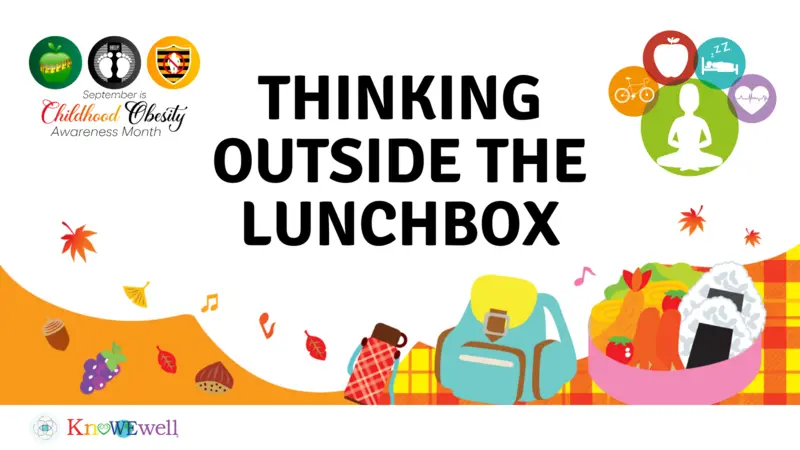

WELLthier Living and Aging

WELLthier Living and Aging
Childhood Obesity: Thinking Outside the Lunchbox
The alarming trend of childhood obesity in the US is worsening, with almost 19% of children under the age of 19 classified as obese. Jyl Steinback, executive director of Shape Up US, believes the solution lies in multidisciplinary health and wellness education for our young people.
Despite all the wellness programs that have been designed to fight it, a 40-year trend of increasing childhood obesity is becoming more severe. Clearly, a new approach is needed to solve America’s obesity epidemic. We can’t focus solely on food. We must think “outside the lunchbox” to crack the problem.
The Centers for Disease Control and Prevention recommends using the relative body mass index (BMI) scale to determine obesity. BMI in the 95th percentile is considered class I obesity. Class II obesity is a BMI of 120% of the 95th percentile, and Class III is 140% of the 95th percentile.
Childhood obesity rates, now at 18.5% among children from 2 to 19, appeared to be flattening out in the US in the past few years. But a new analysis of the data shows severe obesity continues to climb.
According to analysis reported by the American Academy of Pediatrics, the alarming 40-year trend of increasing childhood obesity persists. It is even more distressing when broken down by age, race, and socioeconomic levels.
Clearly a new approach is needed to address America’s obesity problem.
Since 1980, teen obesity has quadrupled, from 5% to 20.6%. Children aged 2 to 5 years old saw sharp increases between 2015 and 2016 when compared to the 2013 to 2014 cycle. African American and Hispanic children in all age groups have significantly higher rates of obesity than do White and Asian American children.
What’s the Big Problem with Childhood Obesity?
Obese children are more likely to suffer from cardiovascular problems, high blood pressure, type 2 diabetes, and breathing issues such as asthma and sleep apnea. They are at higher risk for psychological problems such as anxiety and depression, as well as low self-esteem. And, they often are the targets of bullies. So obesity can affect mental health and social well-being, in addition to physical health. These factors also affect school attendance and educational performance.
In the past 20 years, there have been numerous wellness programs aimed at reducing childhood obesity. Unfortunately, most were one-dimensional niche programs, focusing primarily on what was on the child’s plate with perhaps a little exercise thrown in for good measure.
Physical inactivity is a huge contributing factor to the problem of obesity. The surgeon general recommends that children engage in 60 minutes of moderate activity most days of the week. Many schools have eliminated physical education and other school-based health programs. Estimates show that only 3.8% of elementary schools now provide daily physical education. With widespread access to technology, when children arrive home from school, they are less likely to get the requisite amount of physical activity there either.
Adding back niche programs such as P.E. and nutrition is not enough to stem the tide of obesity and improve overall health. “Thinking outside the lunchbox” is required to develop an effective wellness program that looks at the needs of the whole child.
Our educators are the ones who can help bring about these lifestyle and behavioral changes through both home school and in conventional school. Educators need a multidisciplinary health and wellness education program that integrates with core curricula, including math, science, social studies, language arts, geography, and more. Students need hands-on learning opportunities integrated throughout a relevant, standards-based, meaningful, and fun curriculum that is optimized for personalized learning.
Why This Approach?
We know from the research of cognitive neuroscientist Dr. Adele Diamond that the more parts of the child’s brain we engage, the more likely it is that the student will retain and internalize the material. Curriculum should bridge the gap by bringing physical activity and health into the daily curriculum and not just be an afterthought.
“If we want the best academic outcomes, the most efficient and cost-effective route to achieve that is, counter intuitively, not to narrowly focus on academics, but to also address children’s social, emotional, and physical development. Similarly, the best and most efficient route to physical health is through also addressing emotional, social, and cognitive wellness. Emotional wellness, similarly, depends critically on social, cognitive, and physical wellness,” says Dr. Diamond.
Our educators are in the best position to lead this revolution in the lifestyle and behavioral changes of our young people.
Additionally, curriculum should provide the five kinds of learning identified by the Whole Child Initiative:
- Cognitive-intellectual activity, associated with the left brain
- Creative-intuitive activity (the arts), associated with the right brain
- Structured physical movement and unstructured, self-directed play
- Handwork, making things that can be useful
- Engagement with nature and community.
Shape Up US is developing highly integrated programs with a whole-child approach. Not only do these programs attack childhood obesity through physical activities, they feature resources to help teach students about healthy eating, positive thinking, dental health, financial health, and social responsibility.
A successful program must include a support system. I call this a “Circle of Wellness”—a sustainable program that lasts a lifetime. This is a 360-degree group of parents, grandparents, teachers, and the community that surrounds and supports students in their journey to good health. The statistics show a clear correlation between physical, social, and financial well-being, and academic performance. Other programs have not attacked the problem holistically.
Education shapes the world, and our educators are in the best position to lead this revolution in the lifestyle and behavioral changes of our young people. They need the right tools, and Shape Up US is that sustainable turn-key solution that flows from teacher > to student > to family > to community, educating the “Whole Child”—mind, body, and emotion.
Jyl Steinback is executive director of Shape Up US, a nonprofit dedicated to building a healthier future for our children. www.ShapeUpUs.org
REFERENCES
Steinback, J. (2021). ShapeUpUS.org


 By
By


